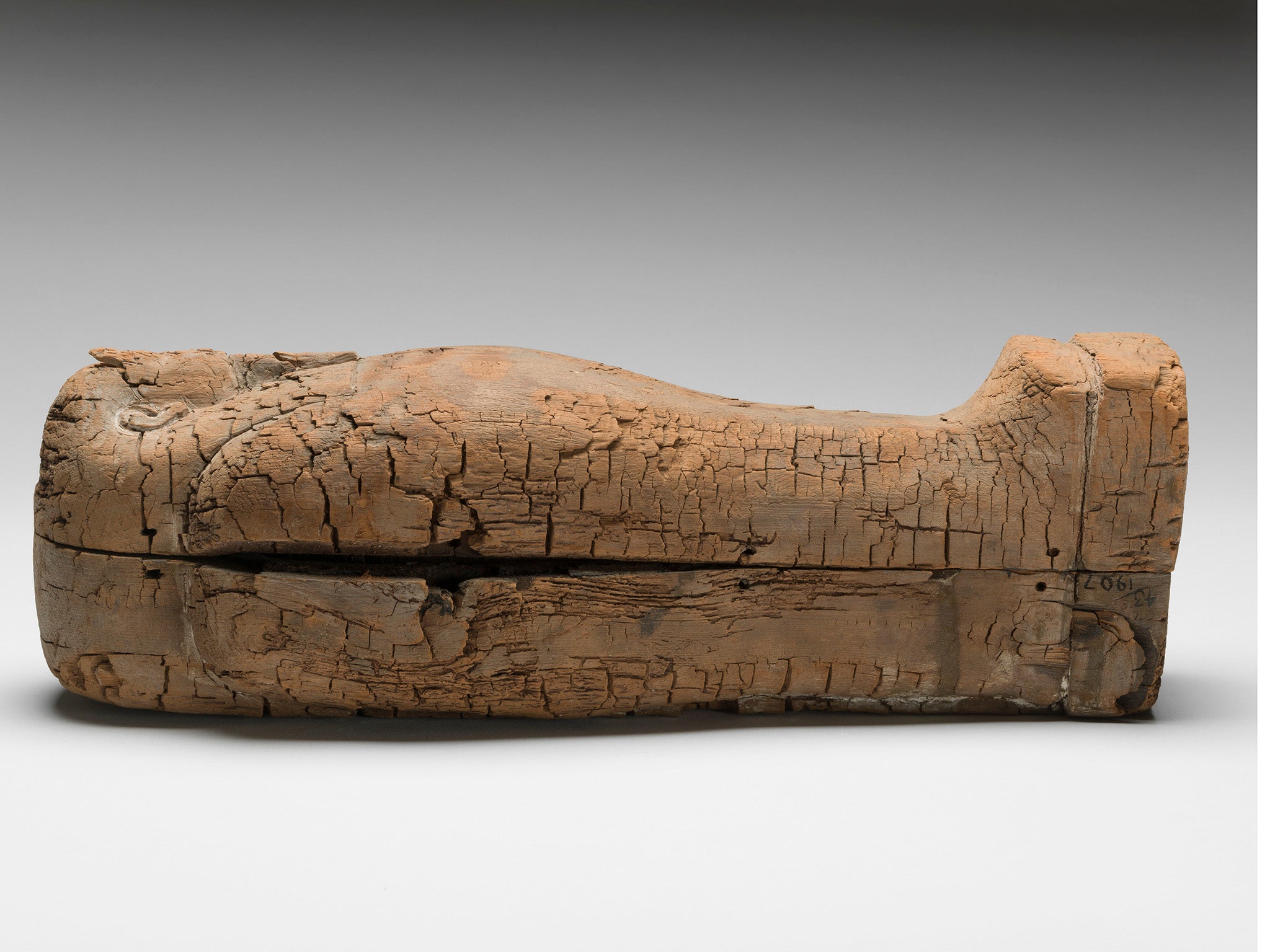Youngest-ever mummified foetus from Ancient Egypt discovered in tiny coffin
'This ground-breaking find educates us further still in our conception of just how precious the unborn child was in Ancient Egyptian society'

The youngest ever example of a mummified human foetus from Ancient Egypt has been found in a discovery that shows “just how precious the unborn child was” to people at the time, experts have said.
The pregnancy lasted for 16 to 18 weeks, according to the Fitzwilliam Museum in Cambridge where staff used a special kind of CT scan to determine the age of the unborn child.
Its coffin, which was just 44cm long, was excavated at Giza in 1907 by the British School of Archaeology.

Julie Dawson, head of conservation at the Fitzwilliam Museum said: “This ground-breaking find educates us further still in our conception of just how precious the unborn child was in Ancient Egyptian society.
“The care taken in the preparation of this burial clearly demonstrates the value placed on life even in the first weeks of its inception.”
Tutankhamun’s tomb contained two mummified foetuses, but they had died after about 25 weeks and 37 weeks of gestation.
The Giza coffin was a miniature version of those used during the Ancient Egyptian Late Period, dating from between 664BC and 525BC.
In a statement, the museum said: “The diminutive wrapped package inside was carefully bound in bandages, over which molten black resin had been poured before the coffin was closed.
“For many years it was thought that the contents were the mummified remains of internal organs that were routinely removed during the embalming of bodies.”
However, the experts decided to try to find out for sure. An X-ray proved inconclusive so it was then decided to use a micro CT scan.
“The cross-sectional images this produced gave the first pictures of the remains of a tiny human body held within the wrappings, which remain undisturbed,” the museum said.
“From the micro CT scan it is noticeable that the foetus has its arms crossed over its chest. This, coupled with the intricacy of the tiny coffin and its decoration, are clear indications of the importance and time given to this burial in Egyptian society.”
The skull and pelvis had collapsed, but the fingers and toes and the long bones of the legs and arms could all be seen.
It is thought that the foetus died as the result of a miscarriage but there were no obvious signs of why the child did not survive to term.
The coffin is currently on display as part of an exhibition at the museum, called Death on the Nile: Uncovering the Afterlife of Ancient Egypt.
Join our commenting forum
Join thought-provoking conversations, follow other Independent readers and see their replies
0Comments